Chiricahua - southwestern New Mexico, southeastern Arizona, and adjacent Mexican states of Chihuahua and Sonora -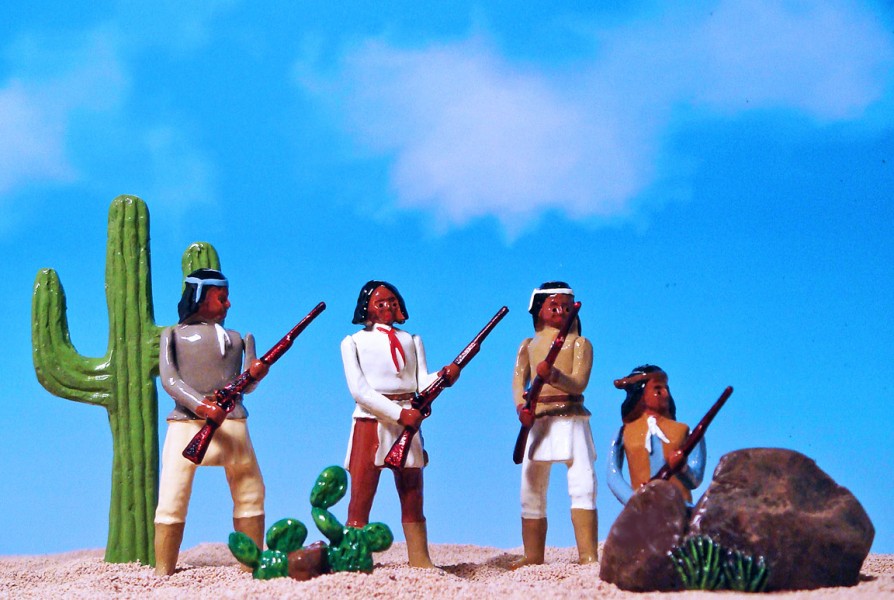 The band was the informal political unit, consisting of followers and a headman. They had no formal leader such as a tribal chief, or council, nor a decision making process.
The band was the informal political unit, consisting of followers and a headman. They had no formal leader such as a tribal chief, or council, nor a decision making process. The core of the band was a "relative group," predominantly, but not nessarily, kinsmen. Named by the Spanish for the mescal cactus the Apaches used for food, drink, and fiber.
The core of the band was a "relative group," predominantly, but not nessarily, kinsmen. Named by the Spanish for the mescal cactus the Apaches used for food, drink, and fiber.
 The band was the informal political unit, consisting of followers and a headman. They had no formal leader such as a tribal chief, or council, nor a decision making process.
The band was the informal political unit, consisting of followers and a headman. They had no formal leader such as a tribal chief, or council, nor a decision making process. The core of the band was a "relative group," predominantly, but not nessarily, kinsmen. Named by the Spanish for the mescal cactus the Apaches used for food, drink, and fiber.
The core of the band was a "relative group," predominantly, but not nessarily, kinsmen. Named by the Spanish for the mescal cactus the Apaches used for food, drink, and fiber.
The basic shelter of the Chiricahua was the domeshaped wickiup made of brush. Similar the Navajo, they also regarded coyotes, insects, and birds as having been human beings; the
Navajo, they also regarded coyotes, insects, and birds as having been human beings; the human race, then, but following in the tracks of those who have gone before.Their dwellings were shelters of a dome shaped frame of cottonwood or other pole brush and were thatched with grass. They were called wickiups, which were easily erected by the women and were well adapted to their arid environment and constant moving of the tribes.
human race, then, but following in the tracks of those who have gone before.Their dwellings were shelters of a dome shaped frame of cottonwood or other pole brush and were thatched with grass. They were called wickiups, which were easily erected by the women and were well adapted to their arid environment and constant moving of the tribes.

 Navajo, they also regarded coyotes, insects, and birds as having been human beings; the
Navajo, they also regarded coyotes, insects, and birds as having been human beings; the human race, then, but following in the tracks of those who have gone before.Their dwellings were shelters of a dome shaped frame of cottonwood or other pole brush and were thatched with grass. They were called wickiups, which were easily erected by the women and were well adapted to their arid environment and constant moving of the tribes.
human race, then, but following in the tracks of those who have gone before.Their dwellings were shelters of a dome shaped frame of cottonwood or other pole brush and were thatched with grass. They were called wickiups, which were easily erected by the women and were well adapted to their arid environment and constant moving of the tribes.

The house itself was termed, "Kowa" and the grass thatch, "Pi".Hunting is a part of daily life - for food, clothing, shelter, blankets. Apache hunted deer, wild turkeys, jackrabbits, coyote,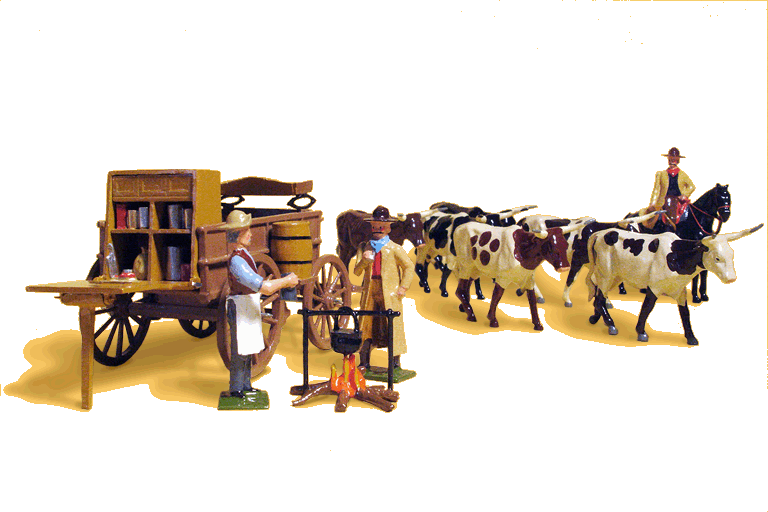 javelin, fox, beavers, buffalo, bears, mountain lions. There was no fishing. Eagles were hunted for their feathers.
javelin, fox, beavers, buffalo, bears, mountain lions. There was no fishing. Eagles were hunted for their feathers.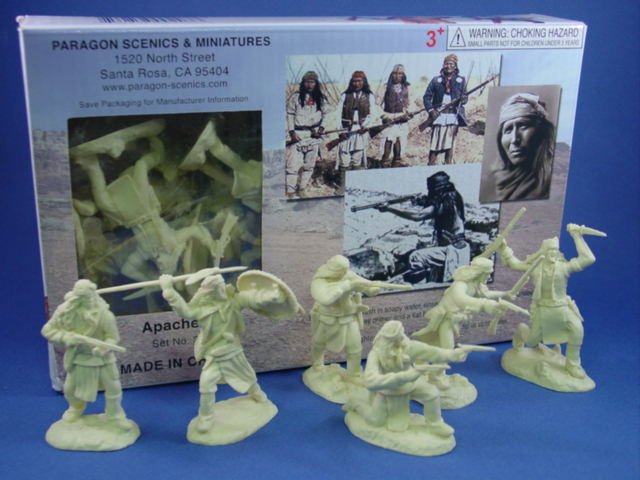 Two or three feathers were plucked from a bald eagle instead of being hunted for food.From early spring to late fall, Apache girls reaching maturity are honored by their tribe with the Sunrise Dance. This ancient ritual is a test of a girl's endurance and discipline, and a
Two or three feathers were plucked from a bald eagle instead of being hunted for food.From early spring to late fall, Apache girls reaching maturity are honored by their tribe with the Sunrise Dance. This ancient ritual is a test of a girl's endurance and discipline, and a 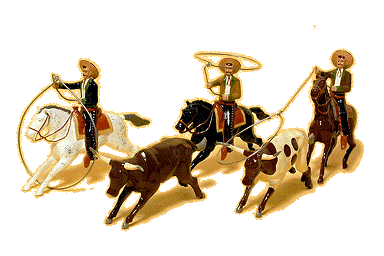 celebration of her womanhood. The Sunrise Dance typically lasts four days. During this time, the girl being honored is dancing almost constantly, to the accompaniment of over 100 songs. Although she is assisted by her godparents and friends, it's a difficult task. Each stage of the ceremony is precisely choreographed, and the girl is not permitted to falter.
celebration of her womanhood. The Sunrise Dance typically lasts four days. During this time, the girl being honored is dancing almost constantly, to the accompaniment of over 100 songs. Although she is assisted by her godparents and friends, it's a difficult task. Each stage of the ceremony is precisely choreographed, and the girl is not permitted to falter.
 javelin, fox, beavers, buffalo, bears, mountain lions. There was no fishing. Eagles were hunted for their feathers.
javelin, fox, beavers, buffalo, bears, mountain lions. There was no fishing. Eagles were hunted for their feathers. Two or three feathers were plucked from a bald eagle instead of being hunted for food.From early spring to late fall, Apache girls reaching maturity are honored by their tribe with the Sunrise Dance. This ancient ritual is a test of a girl's endurance and discipline, and a
Two or three feathers were plucked from a bald eagle instead of being hunted for food.From early spring to late fall, Apache girls reaching maturity are honored by their tribe with the Sunrise Dance. This ancient ritual is a test of a girl's endurance and discipline, and a  celebration of her womanhood. The Sunrise Dance typically lasts four days. During this time, the girl being honored is dancing almost constantly, to the accompaniment of over 100 songs. Although she is assisted by her godparents and friends, it's a difficult task. Each stage of the ceremony is precisely choreographed, and the girl is not permitted to falter.
celebration of her womanhood. The Sunrise Dance typically lasts four days. During this time, the girl being honored is dancing almost constantly, to the accompaniment of over 100 songs. Although she is assisted by her godparents and friends, it's a difficult task. Each stage of the ceremony is precisely choreographed, and the girl is not permitted to falter.
The Indian dancers used ankle wraps to accompany their dances. There are bells atatched to a strap of leather. When you move your leg the ankle wrap rattles and jingles. They also placed these on their knees, elbows, or ankles.
For most of the four days and nights, to songs and prayers, they dance, as well as run toward the four directions. During this time, they also participate in and conduct sacred rituals, receiving and giving both gifts and blessings, and experiencing their own capacity to heal.below andrea mins
Usually the women are the main ones that are the teachers, and they are the stronghold for the family. The children claim their mom's side of the clan, and the father's clan is just like the distant family clan. It's the woman that holds the family together.The importance of the circle is depicted by the shape of the four sacred hoop symbols. The shape of many
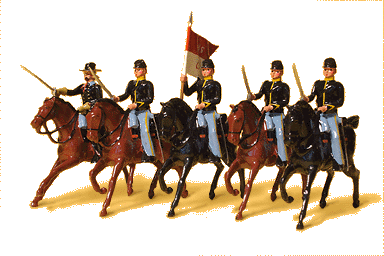 traditional homes is round, such as the Apache wickiup, the Navajo hogan, and the tipi of the Lakota. Religious ceremonies are performed in circular structures, such as in the hogan and the tipi. Traditional dances are also performed in a circle. The motion of the sun, moon, and stars across the sky is circular. The life paths of all creatures, including humans, are also circular.
traditional homes is round, such as the Apache wickiup, the Navajo hogan, and the tipi of the Lakota. Religious ceremonies are performed in circular structures, such as in the hogan and the tipi. Traditional dances are also performed in a circle. The motion of the sun, moon, and stars across the sky is circular. The life paths of all creatures, including humans, are also circular.
The Apache hoop is used in traditional ceremonies and the type of ceremony determines whether a single hoop or four hoops are used. The hoop represents the cycle of life from birth to death. It possesses special powers, which could be used, for example, to bless an individual when the hoop completely encircles the body. The hoop also has healing and protective powers.The basket symbolizes one’s realm of existence with the center opening representing one’s birth into this world and the various designs representing the plains and sacred mountains among which one dwells.
The single Apache hoop has one of the four sacred colors of the tribe: black, green, (blue), yellow and white. These colors represent the four directions, the four seasons, and the four major divisions of the day. An eagle feather is tied at four locations on the hoop. To the Apache, and almost all tribes, the eagle is a sacred bird and its feathers are believed to have special powers.
Food was important to the Apache. Prairie dogs, snakes, turkeys, and fish in the Apache tribe were believed to be unclean so they didn't eat them. Apache boys were taught to move quickly and quietly through the forest to catch food for their family. Every Apache male hunted . The first thing an Apache male did before hunting was greased his body with animal fat to keep out the smell of a person and make the person smell like an animal so the animals wouldn't smell the person and run away.hey exchanged buffalo hides, tallow and meat, bones that could be worked into needles and scrapers for hides, and salt from the desert with the Pueblos for pottery, cotton, blankets, turquoise, corn and other goods. But at times they simply saw what they wanted and took it. They became known among the Pueblo villages by another name, Apachu, "the enemy".the ripening of fruits, such as the red "tunas of the prickly pear cactus, brought hunting and gathering groups together seasonally to harvest the fruit and to socialize with other peoples. In some cases, territorial warfare among native groups erupted over areas with the largest cactus below andrea
In traditional Apache culture, each band was made up of extended families with a headman chosen for leadership abilities and exploits in war. For centuries they were fierce warriors, adept in wilderness survival, who carried out raids on those who encroached on their territory.
The first intruders were the Spanish, who penetrated Apache territory in the late 1500s. The Spanish drive northward disrupted ancient Apache trade connections with neighboring tribes.below andrea
When New Mexico became a Spanish colony in 1598, hostilities increased between Spaniards and Apaches.
An influx of Comanche into traditional Apache territory in the early 1700s forced the Lipan and other Apaches to move south of their main food source, the buffalo. These displaced Apaches began raiding for food.Religion was also a fundamental part of Apache life. Their pantheon of supernatural beings included Ussen (or Yusn), the Giver of Life, and the ga’ns, or mountain spirits, who were represented in religious rites such as healing and puberty ceremonies. Men dressed elaborately to impersonate the ga’ns, wearing kilts, black masks, tall wooden-slat headdresses, and body paint, and carrying wooden swords.
 Some families lived in buffalo- hide teepees, especially among the Kiowa-Apache and Jicarilla. The Apache made very little pottery, and were known instead for their fine basketwork.
Some families lived in buffalo- hide teepees, especially among the Kiowa-Apache and Jicarilla. The Apache made very little pottery, and were known instead for their fine basketwork.The modern term Apache excludes the related Navajo people. However, the Navajo and the other Apache groups are clearly related through culture and language, and thus are considered Apachean. Apachean peoples formerly ranged over eastern Arizona, northwestern Mexico, New Mexico, Texas and the southern Great Plains.
The Zuni, a Pueblo people, gave them the name Apachu, meaning"enemy.” In their dialects, the Apache call themselves Tinneh, Tinde, Dini, or one of several other variations, all meaning "the people.”
The word "Apache" comes from the Yuma word for "fighting-men"and from the Zuni word meaning "enemy."
The Apache tribe consists of six sub-tribes: the Western Apache, Chiricahua, Mescalero, Jicarilla, Lipan and Kiowa.
Each subtribe is from a different geographical region. They are composed of six regional groups: Western Apache - Coyotero - most of eastern Arizona which include the White Mountain, Cibuecue, San Carlos, and Northern and Southern Tonto bands.

It is possible, due to their nomadic nature, that several names were used to identify the same tribe. The Anglo theory is the Apache Indian migrated to the Southwest from Northern Canada in the 1500's.below Mes

The Apache Indian history says it was the other way around, that most of the Athapaskan speaking people migrated to the North and a few stayed in their homeland. In any event, it is generally agreed that about 5,000 Apaches lived in the Southwest at the end of the 1600's

.Apache Foods
Apache people obtained food from four main sources:
• hunting wild animals,
• gathering wild plants,
• growing domesticated plants
• trading with or raiding neighboring tribes for livestock and agricultural products.
The Western Apache diet consisted of 35–40% meat and 60–65% plant foods.
As the different Apache tribes lived in different environments, the particular types of foods eaten varied.
The gathering of plants and other foods was primarily a female chore. However, in certain activities, such as the gathering of heavy agave crowns, men helped. Numerous plants were used for medicine and religious ceremonies in addition their nutritional usage. Other plants were utilized for only their religious or medicinal value.
In May, the Western Apache baked and dried agave crowns that were pounded into pulp and formed into rectangular cakes. At the end of June and beginning of July, saguaro, prickly pear, and cholla fruits were gathered. In July and August, mesquite beans, Spanish bayonet fruit, and Emory oak acorns were gathered. In late September, gathering was stopped as attention moved toward harvesting cultivated crops. In late fall, juniper berries and pinyon nuts were gathered.Below near Sonora
The most important plant food used by the Chiricahua was the Century plant (also known as mescal or agave). The crowns (the tuberous base portion) of this plant (which were baked in large underground ovens and sun-dried) and also the shoots were used.
Other plants utilized by the Chiricahua include: agarita (or algerita) berries, alligator juniper berries, anglepod seeds, banana yucca (or datil, broadleaf yucca) fruit, chili peppers, chokecherries, cota (used for tea), currants, dropseed grass seeds, Gambel oak acorns, Gambel oak bark (used for tea), grass seeds (of various varieties), greens (of various varieties), hawthorne fruit, Lamb's-quarters leaves, lip ferns (used for tea), live oak acorns, locust blossoms, locust pods, maize kernels (used for tiswin), mesquite beans, mulberries, narrowleaf yucca blossoms, narrowleaf yucca stalks, nipple cactus fruit, one-seed juniper berries, onions, pigweed seeds, pinyon nuts, pitahaya fruit, prickly pear fruit, prickly pear juice, raspberries, screwbean (or tornillo) fruit, saguaro fruit, spurge seeds, strawberries, sumac (Rhus microcarpa) berries, sunflower seeds, tule rootstocks, tule shoots, pigweed tumbleweed seeds, unicorn plant seeds, walnuts, western yellow pine inner bark (used as a sweetener), western yellow pine nuts, whitestar potatoes (Ipomoea lacunosa), wild grapes, wild potatoes (Solanum jamesii), wood sorrel leaves, and yucca buds (unknown species). Other items include: honey from ground hives and hives found within agave, sotol, and narrowleaf yucca plants.
The abundant agave (mescal) was also important to the Mescalerowho gathered the crowns in late spring after reddish flower stalks appeared. The smaller sotol crowns were also important. Both crowns of both plants were baked and dried. Other plants include: acorns, agarita berries, amole stalks (roasted and peeled), aspen inner bark (used as a sweetener), bear grass stalks (roasted & peeled), box elder inner bark (used as a sweetener), banana yucca fruit, banana yucca flowers, box elder sap (used as a sweetener), cactus fruits (of various varieties), cattail rootstocks, chokecherries, currants, dropseed grass seeds (used for flatbread), elderberries, gooseberries, grapes, hackberries, hawthorne fruit, hops (used as condiment), horsemint (used as condiment), juniper berries, Lamb's-quarters leaves, locust flowers, locust pods, mesquite pods, mint (used as condiment), mulberries, pennyroyal (used as condiment), pigweed seeds (used for flatbread), pine inner bark (used as a sweetener), pinyon pine nuts, prickly pear fruit (dethorned and roasted), purslane leaves, raspberries, sage (used as condiment), screwbeans, sedge tubers, shepherd's purse leaves, strawberries, sunflower seeds, tumbleweed seeds (used for flatbread), vetch pods, walnuts, western white pine nuts, western yellow pine nuts, white evening primrose fruit, wild celery (used as condiment), wild onion (used as condiment), wild pea pods, wild potatoes, and wood sorrel leaves.
The Jicarilla used acorns, chokecherries, juniper berries, mesquite beans, pinon~ nuts, prickly pear fruit, and yucca fruit, as well as many different kinds of other fruits, acorns, greens, nuts, and seed grasses.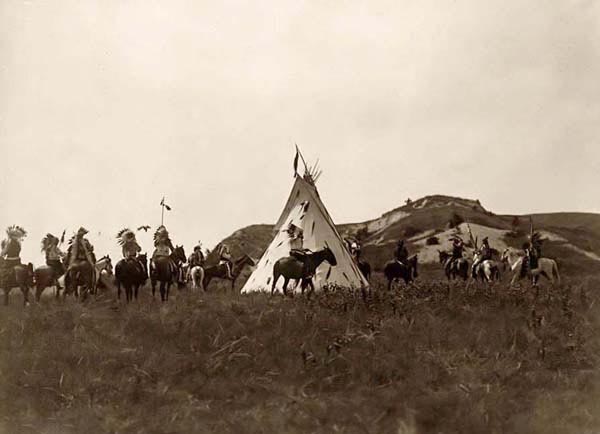
The most important plant food used by the Lipan was agave (mescal). Another important plant was sotol. Other plants utilized by the Lipan include: agarita, blackberries, cattails, devil's claw, elderberries, gooseberries, hackberries, hawthorn, juniper, Lamb's-quarters, locust, mesquite, mulberries, oak, palmetto, pecan, pinyon, prickly pears, raspberries, screwbeans, seed grasses, strawberries, sumac, sunflowers, Texas Persimmons, walnuts, western yellow pine, wild cherries, wild grapes, wild onions, wild plums, wild potatoes, wild roses, yucca flowers, and yucca fruit. Other items include: salt obtained from caves and honey.
Apache people obtained food from four main sources:
• hunting wild animals,
• gathering wild plants,
• growing domesticated plants
• trading with or raiding neighboring tribes for livestock and agricultural products.
The Western Apache diet consisted of 35–40% meat and 60–65% plant foods.
As the different Apache tribes lived in different environments, the particular types of foods eaten varied.
The gathering of plants and other foods was primarily a female chore. However, in certain activities, such as the gathering of heavy agave crowns, men helped. Numerous plants were used for medicine and religious ceremonies in addition their nutritional usage. Other plants were utilized for only their religious or medicinal value.

In May, the Western Apache baked and dried agave crowns that were pounded into pulp and formed into rectangular cakes. At the end of June and beginning of July, saguaro, prickly pear, and cholla fruits were gathered. In July and August, mesquite beans, Spanish bayonet fruit, and Emory oak acorns were gathered. In late September, gathering was stopped as attention moved toward harvesting cultivated crops. In late fall, juniper berries and pinyon nuts were gathered.Below near Sonora

The most important plant food used by the Chiricahua was the Century plant (also known as mescal or agave). The crowns (the tuberous base portion) of this plant (which were baked in large underground ovens and sun-dried) and also the shoots were used.
Other plants utilized by the Chiricahua include: agarita (or algerita) berries, alligator juniper berries, anglepod seeds, banana yucca (or datil, broadleaf yucca) fruit, chili peppers, chokecherries, cota (used for tea), currants, dropseed grass seeds, Gambel oak acorns, Gambel oak bark (used for tea), grass seeds (of various varieties), greens (of various varieties), hawthorne fruit, Lamb's-quarters leaves, lip ferns (used for tea), live oak acorns, locust blossoms, locust pods, maize kernels (used for tiswin), mesquite beans, mulberries, narrowleaf yucca blossoms, narrowleaf yucca stalks, nipple cactus fruit, one-seed juniper berries, onions, pigweed seeds, pinyon nuts, pitahaya fruit, prickly pear fruit, prickly pear juice, raspberries, screwbean (or tornillo) fruit, saguaro fruit, spurge seeds, strawberries, sumac (Rhus microcarpa) berries, sunflower seeds, tule rootstocks, tule shoots, pigweed tumbleweed seeds, unicorn plant seeds, walnuts, western yellow pine inner bark (used as a sweetener), western yellow pine nuts, whitestar potatoes (Ipomoea lacunosa), wild grapes, wild potatoes (Solanum jamesii), wood sorrel leaves, and yucca buds (unknown species). Other items include: honey from ground hives and hives found within agave, sotol, and narrowleaf yucca plants.
The abundant agave (mescal) was also important to the Mescalerowho gathered the crowns in late spring after reddish flower stalks appeared. The smaller sotol crowns were also important. Both crowns of both plants were baked and dried. Other plants include: acorns, agarita berries, amole stalks (roasted and peeled), aspen inner bark (used as a sweetener), bear grass stalks (roasted & peeled), box elder inner bark (used as a sweetener), banana yucca fruit, banana yucca flowers, box elder sap (used as a sweetener), cactus fruits (of various varieties), cattail rootstocks, chokecherries, currants, dropseed grass seeds (used for flatbread), elderberries, gooseberries, grapes, hackberries, hawthorne fruit, hops (used as condiment), horsemint (used as condiment), juniper berries, Lamb's-quarters leaves, locust flowers, locust pods, mesquite pods, mint (used as condiment), mulberries, pennyroyal (used as condiment), pigweed seeds (used for flatbread), pine inner bark (used as a sweetener), pinyon pine nuts, prickly pear fruit (dethorned and roasted), purslane leaves, raspberries, sage (used as condiment), screwbeans, sedge tubers, shepherd's purse leaves, strawberries, sunflower seeds, tumbleweed seeds (used for flatbread), vetch pods, walnuts, western white pine nuts, western yellow pine nuts, white evening primrose fruit, wild celery (used as condiment), wild onion (used as condiment), wild pea pods, wild potatoes, and wood sorrel leaves.
The Jicarilla used acorns, chokecherries, juniper berries, mesquite beans, pinon~ nuts, prickly pear fruit, and yucca fruit, as well as many different kinds of other fruits, acorns, greens, nuts, and seed grasses.

The most important plant food used by the Lipan was agave (mescal). Another important plant was sotol. Other plants utilized by the Lipan include: agarita, blackberries, cattails, devil's claw, elderberries, gooseberries, hackberries, hawthorn, juniper, Lamb's-quarters, locust, mesquite, mulberries, oak, palmetto, pecan, pinyon, prickly pears, raspberries, screwbeans, seed grasses, strawberries, sumac, sunflowers, Texas Persimmons, walnuts, western yellow pine, wild cherries, wild grapes, wild onions, wild plums, wild potatoes, wild roses, yucca flowers, and yucca fruit. Other items include: salt obtained from caves and honey.
bill ward
Plants utilized by the Plains Apache include: chokecherries, blackberries, grapes, prairie turnips, wild onions, and wild plums. Numerous other fruits, vegetables, and tuberous roots were also used.
The Navajo practiced the most crop cultivation, the Western Apache, Jicarilla, and Lipan less. The one Chiricahua band (of Opler's) and Mescalero practiced very little cultivation. The other two Chiricahua bands and the Plains Apache did not grow any crops.
Apaches belong to the Southern Athapascan linguistic family.There was little political unity among the Apachean groups. The groups spoke seven different languages. The current division of Apachean groups includes the Navajo, Western Apache, Chiricahua, Mescalero, Jicarilla, Lipan, and Plains Apache (formerly Kiowa-Apache). Apache groups live in Oklahoma and Texas and on open prison camps akin to concentration camps as in the boer war sense and called reservations in Arizona and New Mexico.
Plants utilized by the Plains Apache include: chokecherries, blackberries, grapes, prairie turnips, wild onions, and wild plums. Numerous other fruits, vegetables, and tuberous roots were also used.
The Navajo practiced the most crop cultivation, the Western Apache, Jicarilla, and Lipan less. The one Chiricahua band (of Opler's) and Mescalero practiced very little cultivation. The other two Chiricahua bands and the Plains Apache did not grow any crops.
Apaches belong to the Southern Athapascan linguistic family.There was little political unity among the Apachean groups. The groups spoke seven different languages. The current division of Apachean groups includes the Navajo, Western Apache, Chiricahua, Mescalero, Jicarilla, Lipan, and Plains Apache (formerly Kiowa-Apache). Apache groups live in Oklahoma and Texas and on open prison camps akin to concentration camps as in the boer war sense and called reservations in Arizona and New Mexico.
bill ward
Some Apacheans have moved to large metropolitan areas. The largest Apache urban communities are in Oklahoma City, Kansas City, Phoenix, Denver, San Diego and Los Angeles.
Some Apacheans were employed in migrant farm labor and relocated to agricultural regions of Southern California, such as the Coachella, Imperial and Colorado River valleys, where now tens of thousands of Apacheans live. Native American Indian resistance happened in the Southwestern United States around the 1860s. below Fixed Bayonet productions. American /Mexican war. 25 pound per mounted figure unpainted post free anywhere in the world. Special offer for Summer. Once the United states had conclude their Mid Victorian war with Mexico both countries collaborated at various intervals to halt the Real Americans of the South west, the Comanche and apache were waged war whenever possible but it was only with the event of more modern firearms that the United states army managed to vanquish the Apache and Comanche. Above my commercial products of the conflict.Available unpainted.The western states and territories were very important for the North during the Civil War period. Gold from California and Silver from Nevada helped finance the war against the South. The Native American Indians were in the path of the expanding valuable mineral hunt and many new settlements.
Once the United states had conclude their Mid Victorian war with Mexico both countries collaborated at various intervals to halt the Real Americans of the South west, the Comanche and apache were waged war whenever possible but it was only with the event of more modern firearms that the United states army managed to vanquish the Apache and Comanche. Above my commercial products of the conflict.Available unpainted.The western states and territories were very important for the North during the Civil War period. Gold from California and Silver from Nevada helped finance the war against the South. The Native American Indians were in the path of the expanding valuable mineral hunt and many new settlements.
 Once the United states had conclude their Mid Victorian war with Mexico both countries collaborated at various intervals to halt the Real Americans of the South west, the Comanche and apache were waged war whenever possible but it was only with the event of more modern firearms that the United states army managed to vanquish the Apache and Comanche. Above my commercial products of the conflict.Available unpainted.The western states and territories were very important for the North during the Civil War period. Gold from California and Silver from Nevada helped finance the war against the South. The Native American Indians were in the path of the expanding valuable mineral hunt and many new settlements.
Once the United states had conclude their Mid Victorian war with Mexico both countries collaborated at various intervals to halt the Real Americans of the South west, the Comanche and apache were waged war whenever possible but it was only with the event of more modern firearms that the United states army managed to vanquish the Apache and Comanche. Above my commercial products of the conflict.Available unpainted.The western states and territories were very important for the North during the Civil War period. Gold from California and Silver from Nevada helped finance the war against the South. The Native American Indians were in the path of the expanding valuable mineral hunt and many new settlements.
They United States along with the expanding railroad companiess plotted to have the huge herds of Bison, destroyed so that the Native Americans would starve or move.(Mexican infantry from my list of commercially available figures.10.95 unpainted. Free post plus free painted soldier)

One Native American tribe that fought this expansion of the settlers were the Apaches. In the struggle for survival,first the Mescalero and then the Chiricahua bands fought back. The Mescalero Apache bands were led by Cochise, and Victorio.
The Chiricahua band was led by Cochise and Geronimo.The Apachean tribes were historically very powerful, opposing the Spaniards and Mexicans for centuries. The first Apache raids on Sonora appear to have taken place during the late 17th century.the tried to make the Apaches dependent (thereby placating them) upon poor-quality firearms and liquor rations issued by the colonial government (this was called the "Galvez Peace Policy").hough limited to using dogs as pack animals, the Jicarilla were the most successful raiders.below sonora

When the Spaniards brought horses once again to North America the Jicarilla took full advantage of the horses. (the previous horses had been eaten by The Jicarilla long ago). 

The Jicarilla were not recognized as being distinctive from the other southern Athabascans: Chiricahuas, Navajos, Western Apaches, Mescaleros, Kiowa Apaches, and Lipans, until about 1700. Jicarilla are further identified as the plains people (Llaneros), and the mountain-valley people (Olleros) or Hoyero.The Apache and the Pueblos managed to maintain generally peaceful relations; however this changed with the appearance of the Spaniards. Arriving in the mid 1500s, the first Spanish intruders drove northward into Apache territory disrupting the Apache trade connections with neighboring tribes.

No comments:
Post a Comment